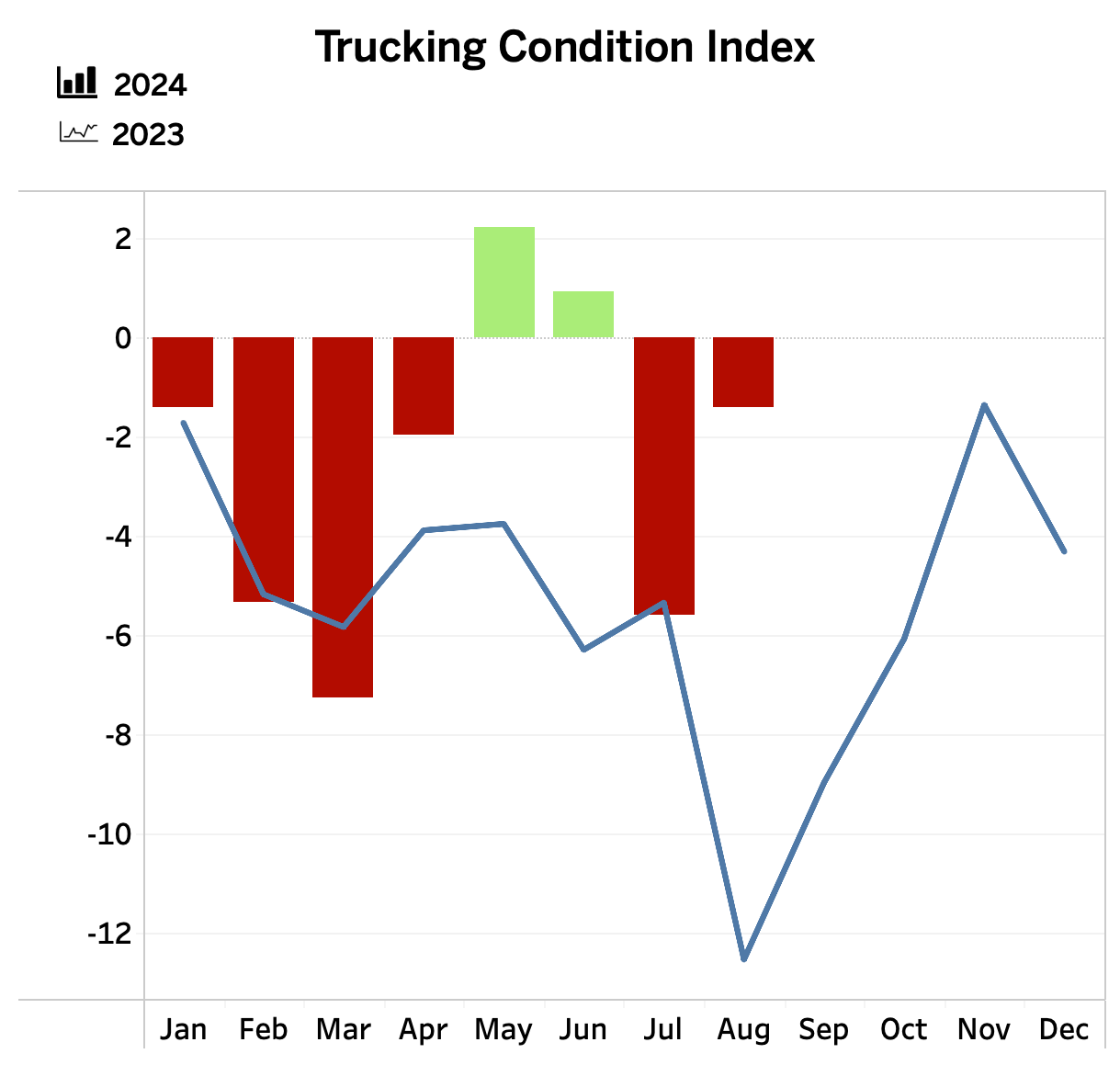Buoyed by a return to consistent decreases in fuel prices, business conditions in the trucking sector improved slightly in August but remain negative overall, according to a measure from transportation analysis group FTR.
FTR’s Trucking Conditions Index improved in August to -1.39 from the reading of -5.59 in July. The Bloomington, Indiana-based firm forecasts that its TCI readings will remain mostly negative-to-neutral through the beginning of 2025.
“Trucking is en route to more favorable conditions next year, but the road remains bumpy as both freight volume and capacity utilization are still soft, keeping rates weak. Our forecasts continue to show the truck freight market starting to favor carriers modestly before the second quarter of next year,” Avery Vise, FTR’s vice president of trucking, said in a release.
The TCI tracks the changes representing five major conditions in the U.S. truck market: freight volumes, freight rates, fleet capacity, fuel prices, and financing costs. Combined into a single index, a positive score represents good, optimistic conditions, and a negative score shows the opposite.















